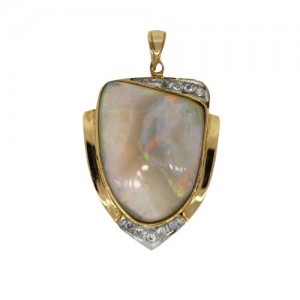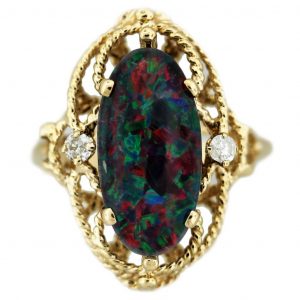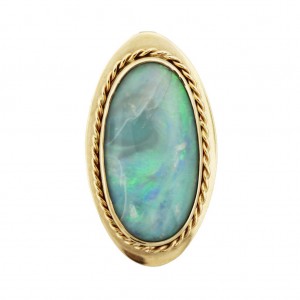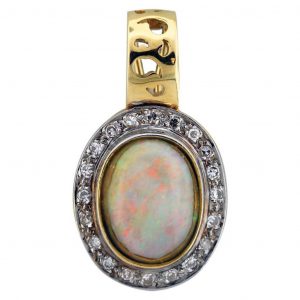October Birthstone Opal
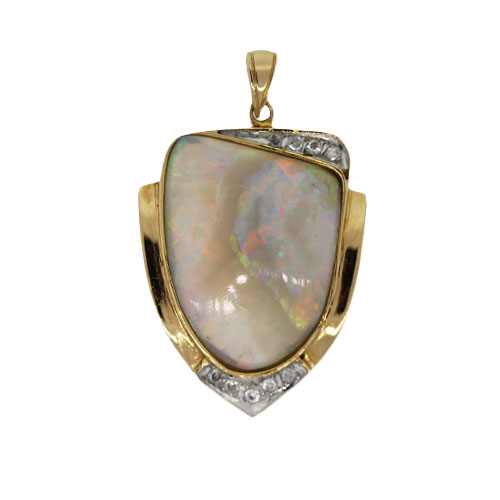
Opal, the national gemstone of Australia, is deposited at low temperatures, and is commonly found in marl, sandstone, limonite, rhyolite and basalt, but can occur in the fissures of most any type of rock. Almost all of the world’s opals come from Australia, and South Australia produces 80% of those. The water content of the opal is usually between 6% and 10%, but can be anywhere between 3% and 21% by weight, and it is a hydrated amorphous form of silica classed as a mineraloid.
HISTORY
The opal symbolized hope and love in ancient Rome. The beautiful stones were given names such as “Pandora”, “Empress” and “Light of the World”. The word “opalus” was synonymous with the term “precious stone” in the ancient Roman language. The dramatic colors of the opal were compared to galaxies, volcanoes and fire.
In some cultures there is folklore that says that opals have supernatural powers. There are legends that claim that the stone falls from the sky with bolts of lightning. Some ancient Greek cultures believed that the opal guarded the owner of the stone from deadly diseases. In Europe, they have always been considered a symbol of purity, truth and hope.
The opal had even been thought of as a preserver of blonde hair. In today’s culture, because the opal is the birthstone for the month of October, some think that it is bad luck for someone born in any other month to wear the stone. Still, throughout most of history, the beautiful opal is considered to be one of the luckiest gems because of the display of colors.
FORMATION
Seasonal rains that drench the dry ground in Australia’s semi-desert outback produce the opal. This rainfall will go deep into the ground towards the ancient underground rock with the dissolved silica. After this rain dries up, and during all dry periods, the water is evaporated and will leave deposits of silica in the cracks and layers of the sedimentary rock. It is these deposits of silica that form what is called the opal.
The beautiful flashes of color in the opal are called the play-of-color. The two types of opals are precious opals, which display the play-of-color, and common opals, which do not. It is the internal structure that will diffract the light in a sort of grid-like pattern, displaying these colors. Precious opals can be clear, black, white, brown, gray, green, red, slate, orange, pink, yellow, rose, blue and magenta. The rarest colors in the opal are the red hues against the black, and the most common are the greens and whites. The stone also varies in optical density; some are opaque while others are semi-transparent.
CATEGORIES
Gemstone experts divide precious opals into five main categories. White or light opals are translucent to semi-translucent. The play-of-color is against a white, lighter or gray background called the body color. The black opals are translucent to opaque, with the play-of-color against a black or darker background. The fire opal is transparent to translucent and has brown, red, orange or yellow body color. This type of opal is sometimes referred to as a Mexican opal. The boulder opal is translucent to opaque and has play-of-color against a light to dark background. Sometimes the surrounding rock, or matrix, becomes part of the gem. The crystal or water opal is transparent to semitransparent with a clear background. This particular type of opal displays very good play-of-color.


